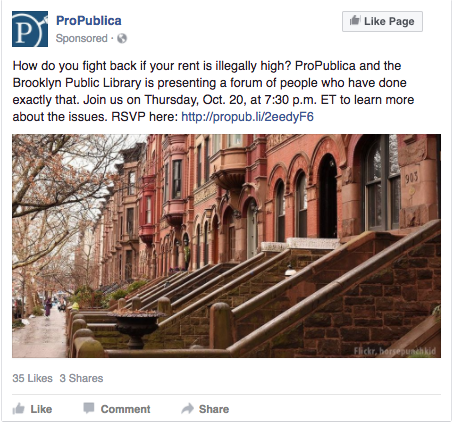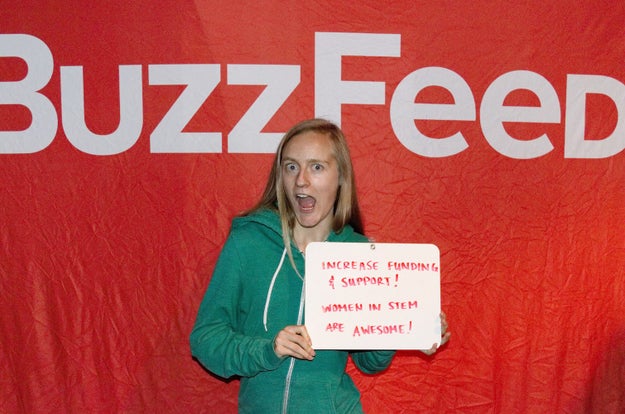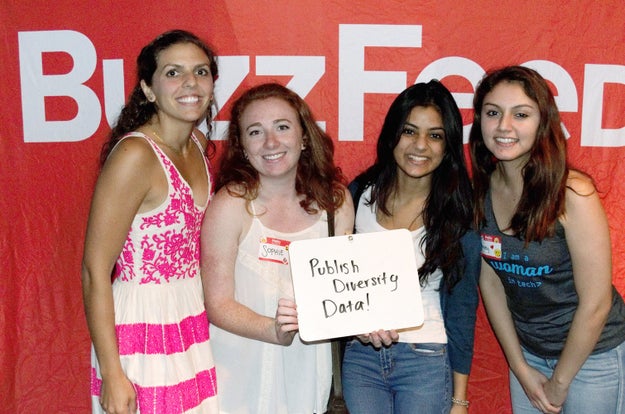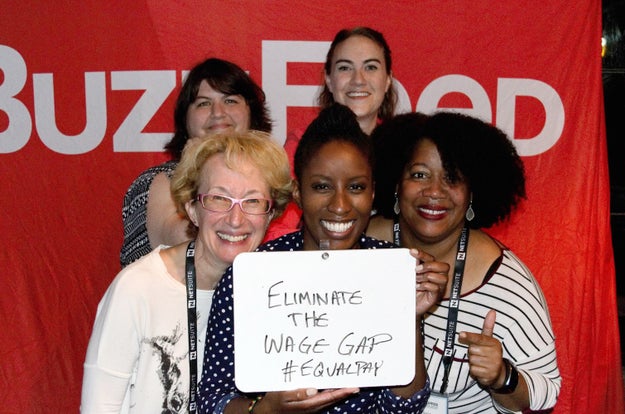
Visitors listen to commentators after a battle between international teams during a League of Legends tournament on May 8, 2014 in Paris.
Lionel Bonaventure / AFP / Getty Images
League of Legends, a multiplayer online battle arena game, is the most popular video game and one of the most-watched esports in the world. One hundred million people play it on their PCs every month. And today is the finale of the game’s month-long World Championship Series. In front of 18,000 people in Los Angeles’ Staples center and tens of millions more online, the final two teams, Samsung Galaxy and SK Telecom T1, will fight.
Working in teams of five from a giant stage with a Jumbotron above their heads, players will each take control of one of 133 magical heroes — choices include a warrior, a mummy, and a nine-tailed fox — to try to destroy their enemy’s base. Just like Olympic athletes prepare for a chance at the big games, the professionals playing in the LoL world championships have practiced the game relentlessly for years to earn their spots in the competition.
As the League Championship Series (LCS), has grown, though, its players have started to expect more from the game that they’ve helped make into such a success. Riot Games, which created League of Legends, raked in $1.6 billion in revenue in 2015. Teams, by contrast, say they’re having trouble making enough money to sustain themselves.
The life of a professional gamer isn’t all joy and joysticks
It takes hundreds of hours for players to master something they call “the meta,” short for metagame. It’s the arcane book of plays for the millions of battle situations they can find themselves in. Players who spoke to BuzzFeed News when they were in San Francisco to play in the first round of championship games said they practice at least eight hours a day, six days a week. The season runs from January to October if a team does well. Before tournaments, that daily schedule can lengthen with extra preparation, and players can find themselves locked in battle for as much as 14 hours per day.
They could practice less, but, as Alexander “Abaxial” Haibel, coach of the Brazilian team INTZ, told BuzzFeed News, “then you would be bad.” The current career of a professional player is two to four years. There are very few veteran players.
Despite all that hard work, “the [monetary] gain from being a player or a caster [an announcer] in the LCS right now is not good enough,” Jacob “YamatoCanon” Mebdi, coach of the Splyce LoL team, told BuzzFeed News.
Capital is flooding into the discipline as more mainstream backers hope to cash in on the niche game’s high viewership stats. The Philadelphia 76ers just bought two esports teams, and some players are worth millions. But not everyone is raking in money. Andy “Reginald” Dinh, owner of Team SoloMid (TSM), arguably the most famous team in LoL, publicly castigated the gamemaker in August for failing to understand the dire financial situations of most pro teams.
According to the team owners and staff that spoke to BuzzFeed News in San Francisco, most, if not all, League of Legends teams run in the red.

A League of Legends World Championship match in San Francisco
Blake Montgomery
Splyce team owner Marty Strenczewilk told BuzzFeed News that his franchise, comprised of eight teams playing different games besides League of Legends, invests in LoL as a means of brand exposure, not making money. That team, he said, loses money. Other games earn revenue for his business.
Dinh expressed similar sentiments in a blog post: “I made no money for two years and had to borrow from my parents because I believed so much in the game…The reason why I started to invest in other games was because LCS left me no choice…Other publishers are more collaborative and provide more opportunities for teams and players to make revenue.”
In North America and Europe, Riot pays all starter players in the professional league $12,500 per split, which is what players call the two three-month seasons per year. If a player is good enough to start on one of the 20 teams in the LCS, he or she can take home a slice of the $2 million awarded to the winning World Championship team.
The total LoL world championship prize pool is $5 million. Defense of the Ancients 2, a less popular esport, offers championship winnings of $20 million. Riot has kept the pool low intentionally by not opening it up to crowdfunding in the past, which DoTA uses to increase its prizes. DoTA fans buy championship-specific in-game items and activities, and their purchases contribute to the tournament’s pool. Riot has adopted the crowdfunding model this year.
Whalen “Magus” Rozelle, director of esports at Riot Games, told BuzzFeed News, “We don’t focus on the prize pool because it’s just for winners, but it seems we’ve underdone the pool.” He expects it to increase in the future.
After Dinh’s public criticism, Riot released a letter offering some concessions and promises to keep improving the league’s economics. The company said it would start offering winning teams a quarter of the revenue from the “skins” — cosmetic, digital modifications players can buy for their champions — that carry the teams’ names. (Riot has previously kept the revenue from team skins for itself.) The company also said it’s working to expand its media distribution, though it wouldn’t offer any details. (Riot does not give any part of broadcast revenue to LCS teams.)
Even still, Hans Christian “Liq” Durr, manager of Splyce’s League of Legends team, told BuzzFeed News, “Riot’s recent move is a baby step in comparison to the digital items in [games like] Counter Strike: Global Offensive or DoTA [Defense of the Ancients] 2. There are not as many possibilities for revenue in LoL as there are in other disciplines.”

Announcers, known as “casters” within esports, at a League of Legends World Championship match in San Francisco.
Blake Montgomery
So how can teams make enough money to keep playing?
According to Harris Peskin, general counsel and chief of operations for the LoL team H2K, sponsorships are the primary way a team earns money. But, like everything else in professional League of Legends, it’s complicated. Riot controls what sponsors a team can represent.
Rozelle told BuzzFeed News that Riot draws a sharp distinction between sponsoring the teams and sponsoring the league. To players, however, that separation may not be so clear. In August, Riot demanded that TSM remove an HTC-sponsored YouTube video from the team’s own channel that showed team members playing a game with an HTC Vive virtual reality headset. Riot saw it as an ad for a competing game. HTC responded by saying it wanted to support the sport but could see very few ways to continue doing so because of the severe limitations Riot placed on sponsors.
Rozelle sees it differently: “We want teams to have lots of sponsors, and we don’t believe our guidelines are too stringent,” he told BuzzFeed News. “We do impose greater restrictions on sponsorships of the league itself than on teams, but that’s not money we’re taking away from players. We allow teams to have a tremendous number of sponsors — just look at the logos all over their jerseys.”
Teams are counting on more than what they’re wearing to make money. “Our sponsors don’t just want a jersey logo,” Splyce’s Strenczewilk said. “Sponsorship is such a challenge because Riot is so controlled, so structured… They exercise the most involved control of any esports publisher.”

The “Summoner's Cup,” the prize for winning the tournament.
Blake Montgomery
That’s not an exaggeration. Riot Games occupies a singular place even within esports: In addition to owning LoL, it owns and operates the professional league. That would be like if the NFL itself had created football and owned all the channels that broadcast football games. Activision Blizzard, Electronic Arts, Nintendo, and other esports publishers operate their leagues through partners with sports management expertise.
That vertically integrated ownership means that Riot looks unfavorably at any attempts to start an LCS competitor. Rozelle outlined the company’s views by saying, “Third-party organizations don’t provide a stable foundation. High quality production and stability are byproducts of Riot owning the league and the game. We’re responsible for the evolution of the ecosystem from top to bottom.”
A single high-level league also means that team owners and players have no option to leave if they aren’t satisfied with Riot’s management of their profession. Strenczewilk told BuzzFeed News, “The ecosystem of the game and the league is weaker because Riot owns them both.”
What comes next?
One way forward for LoL teams may require following the lead of professional sports leagues like the NFL, MLB, and NBA, to establish a players’ union.
Several Splyce players see organization as “inevitable,” but they didn’t have an idea of when, or how, a union would coalesce. INTZ’s coach Haibel told BuzzFeed News, “It’s starting to happen as we begin to think more about the future. Right now, there’s very little job stability or future prospects. The short player careers limit the kind of long-term thinking needed for a union.”
Rozelle told BuzzFeed News that a LoL players’ union will probably come about and that Riot would be “heavily involved” in its creation. He wouldn’t speculate as to what that involvement would look like, though he told BuzzFeed News that he doesn’t feel a union would be a bad thing.
If Riot is as involved in the creation of a players’ union as it has been so far with every other aspect of League of Legends, that could complicate the LCS even further. Dennis Coates, a professor at the University of Maryland Baltimore County who studies sports economics, told BuzzFeed News, “If the ownership would organize the players and negotiate with itself for the players’ salaries — as it seems likely to do — that would be a clear conflict of interest.”
Colin Nimer, a freelance esports journalist, told BuzzFeed News that in his experience, most esports have a few years of popularity. But dozens of new games hit the market every year, and some of them will inevitably become esports that compete with LoL. A 100 million people playing LoL per month means that Riot has succeeded in selling its game to a huge audience. But there’s no guarantee that audience will stay.
Professional play has been integral in making LoL so successful. If the game&039;s professionals can’t sustain their careers, Riot’s revenue and relevance may also fade.
Quelle: <a href="The Growing Pains Of "League Of Legends,” The World&039;s Most Popular Video Game“>BuzzFeed






















